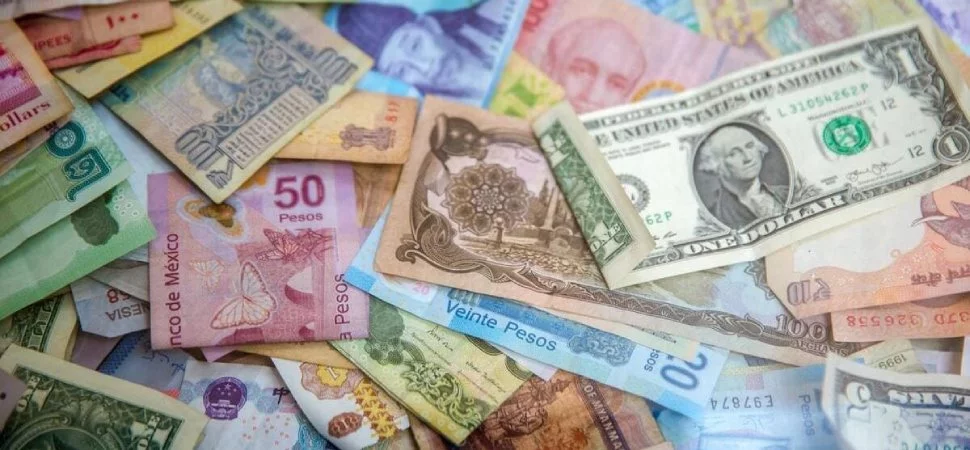The global economy is constantly changing, influencing exchange rates, which in turn play a key role in international trade and investment. In this ranking, we take a look at the 12 strongest currencies in the world, assessing not only their value in the global market, but also the factors that ensure their strength and influence. These currencies remain pillars of the global financial system, and their performance in 2024 continues to reflect the complex processes taking place on the global economic stage.
↑ 1. US dollar (USD)
By exchange rate alone, the U.S. dollar ranks tenth in the world and is the world's reserve currency, because international trade is conducted mainly through it. For example, if you buy a product in China from Australia, the payment is likely to be made in US dollars. This is why most central banks hold the dollar in their foreign exchange reserves to facilitate international trade.
This allows governments to import and export essential commodities such as crude oil. It is therefore not surprising that, according to the Bank for International Settlements (BIS), 88% of all foreign exchange transactions, amounting to 6.6 trillion dollars a day, involve the US dollar.
↑ 2 The Swiss Franc (CHF)
Switzerland, despite its small size, is one of the richest countries in the world, along with Liechtenstein, which also uses the franc. Its low debt and high GDP guarantee the stability of the currency, making it a very strong currency. Investors also see the Swiss economy and the franc as stable and use the currency as a safe haven during periods of economic instability. The strict monetary policy applied in Switzerland and Liechtenstein guarantees the safety of their funds, which are used for investments around the world.
↑ 3. Euro (EUR)
This currency is highly valued for its reliability based on the region's strong and stable economy. Until July 2022, the euro was stronger than the US dollar because the EU economy was booming, but EU countries were struggling due to macroeconomic factors that caused the euro to fall. On 12 July of that year, the euro reached parity with the US dollar and has remained weaker than the latter since then, a situation that is likely to continue, at least in the short term.
↑ 4. Canadian Dollar (CAD)
The CAD is one of the most widely traded currencies in the FX market, which means tight spreads and high liquidity for traders. At the same time, investors trust the Canadian economy due to its legal and political stability. This makes the Canadian dollar one of the 12 strongest currencies in the world, and there is no reason to believe it will lose its place in the future.
↑ 5. Cayman Islands Dollar (KYD)
The KYD may not be the first thing you think of when you picture the Cayman Islands, but that's what makes the currency so strong. The country has favourable tax laws, making it attractive to multinational companies that set up offices here to avoid paying high taxes in other countries. At the same time, monetary policy here is just as strict, if not stricter, than in Switzerland, allowing wealthy people to invest their money discreetly and with minimal taxes.
↑ 6. Gibraltar Pound (GIP)
The Bank of England issues the Gibraltar currency, which is pegged to the value of sterling. The Gibraltar Pound (GIP) therefore has the same value as sterling and can be used interchangeably in the region. This makes the GIP a very strong currency even though the economy is not as strong.

↑ 7. Pound Sterling (GBP)
The Pound Sterling is often considered the strongest currency in the world and is also the oldest currency still in circulation. The UK's large and stable economy gives the Pound Sterling strength, especially internationally, as it is the fourth most traded currency in foreign transactions. Before the dollar became the reserve currency, sterling was the main medium of exchange. However, since then, its real value has been falling against the dollar due to macroeconomic issues and the growing importance of the United States as a global economic power.
↑ 8. Jordanian Dinar (JOD)
Jordan has decided to fix the exchange rate of its currency to avoid sharp fluctuations. The Central Bank of Jordan (CBJ) simply pegged the value of the JOD to the U.S. dollar. Whatever the economic performance of the country, the value of the JOD will always remain the same. The advantage is that JOD is one of the strongest currencies in the world, but it is affected by factors beyond its control. Since CBJ cannot make monetary policy, it is completely dependent on the decisions of the Fed.
↑ 9. Omani Rial (OMR)
As in Jordan, Oman's currency is pegged to the US dollar. This currency is relatively recent: the Omani riyal (OMR) began circulating in 1977, and since 1986 its value has been fixed at the level of the US dollar. This attractive parity is partly due to the fact that Oman is a large oil producer with low debt, making it a wealthy country with a strong economy.
↑ 10. Bahrain Dinar (BHD)
The Bahraini dinar is also pegged to the US dollar for the same reasons as other countries in the region. The peg is set at 1 US dollar equal to 0.376 08 BHD, and like other countries with pegged currencies, it enjoys the advantages and disadvantages of this tight monetary policy.
↑ 11. Kuwaiti Dinar (KWD)
The Kuwaiti dinar is the first and strongest currency in the world. It was first introduced in 1960, and you won't be surprised to learn the reason for its strength: it is pegged to the US dollar. This time, for 1 US dollar, you get 0.30 KWD, making it the most expensive currency in nominal terms. But as we all know, that doesn't make Kuwait the strongest economy in the world, especially since it depends mainly on oil exports.
↑ 12. the Libyan Dinar (LYD)
You might be surprised to find the Libyan dinar on this list, given the civil war that has been raging in the country for almost a decade now. Libya has managed to support its currency by essentially pegging it to the US dollar, as the majority of the population uses the dollar for their trade. But to face global competition, Libya's central bank has devalued the LYD. Therefore, it is likely that this currency may not make an appearance on this list in the coming months.
↑ Conclusion
The world of finance is always full of surprises, and even the strongest currencies can experience fluctuations influenced by global events. As our ranking shows - the key to a currency's resilience lies not only in its face value, but also in the economic strategy behind it.


